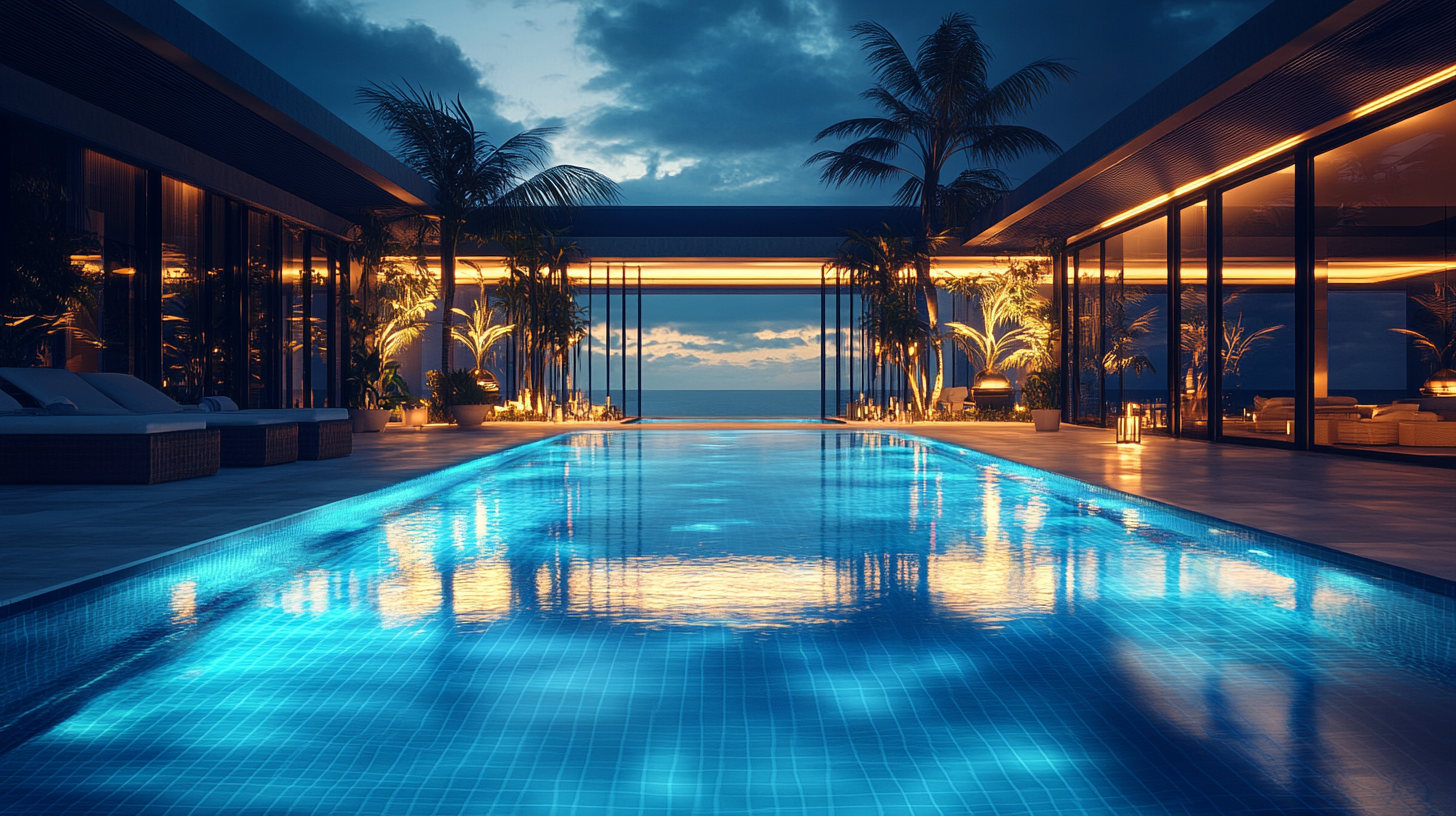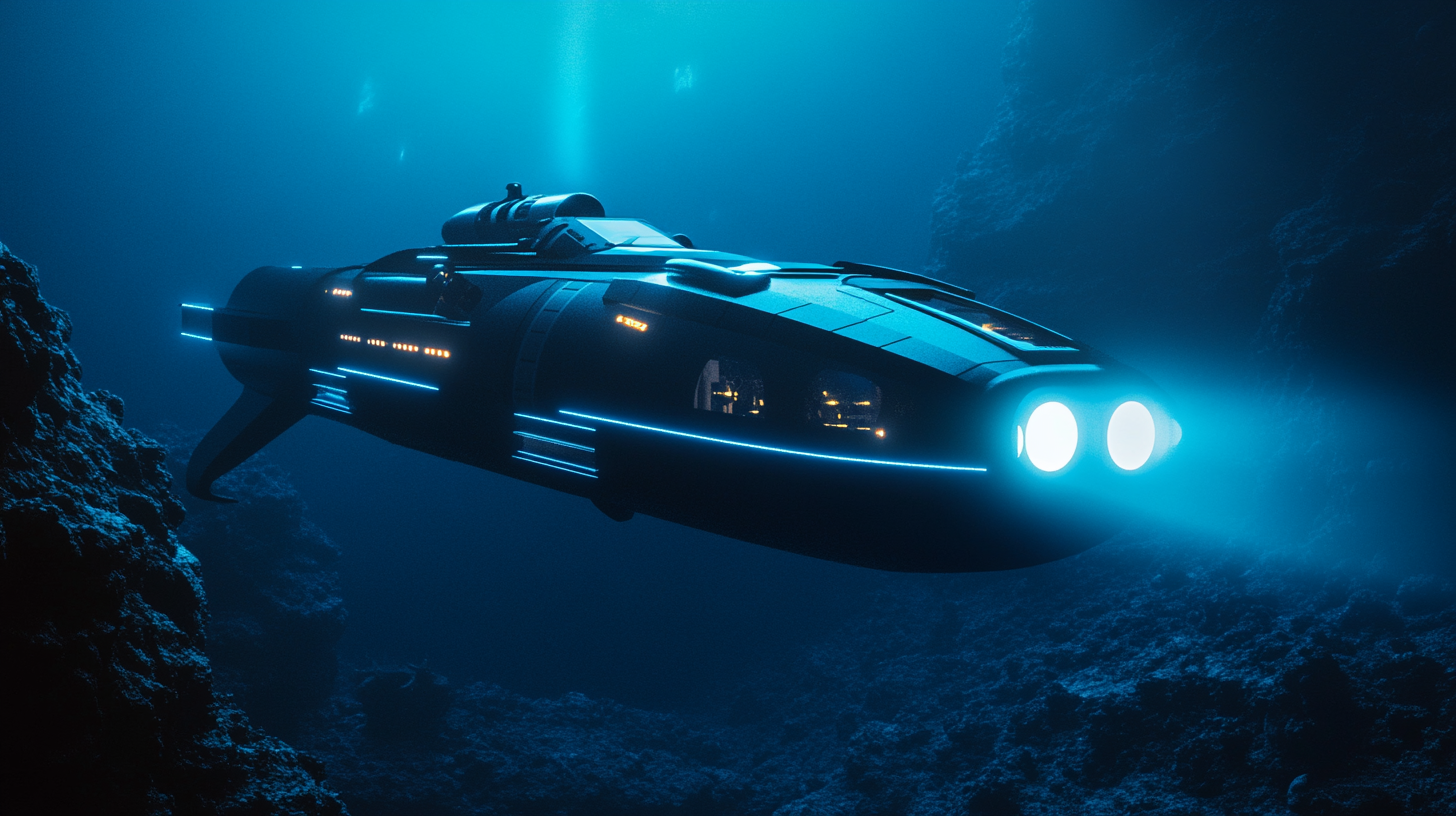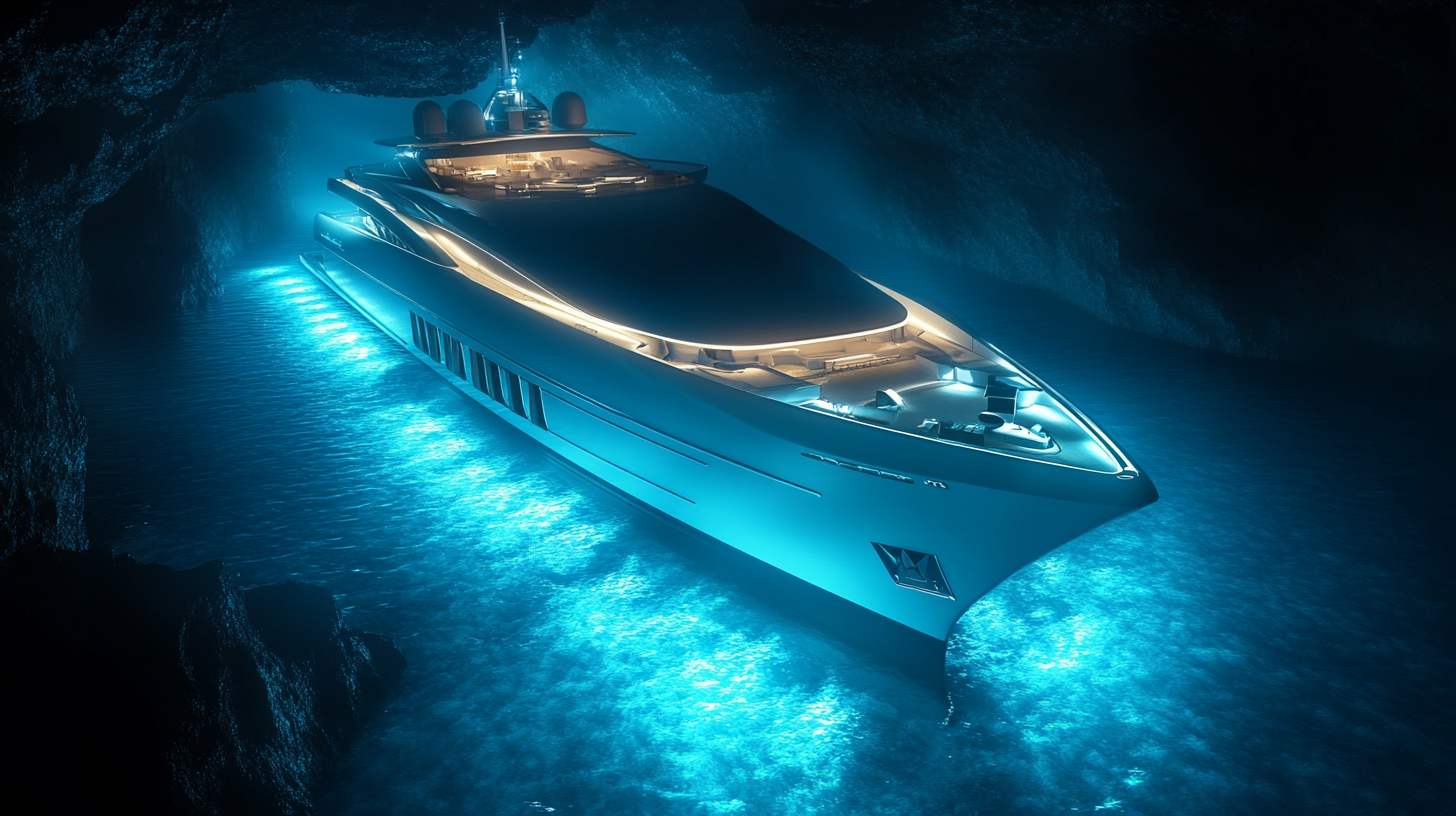Incorporating underwater pool lights into pool design
Incorporating underwater pool lights into your pool design isn’t just about aesthetics; it offers a myriad of benefits that go beyond simply enhancing the visual appeal. One of the most immediate advantages is the added safety. By illuminating the water, underwater lights help prevent accidents during night-time swims or evening pool parties, allowing both children and adults to clearly see where they are stepping or diving. This can be especially crucial for pools that are irregularly shaped or have varying depths, as the lights can highlight any potential hazards.
Beyond safety, underwater pool lights also create an inviting and luxurious atmosphere. Imagine hosting a night-time pool party where the water glows with a subtle, mesmerizing light. This not only makes for a stunning visual effect but also sets the perfect mood for any evening gathering. Lights can be strategically used to emphasize architectural elements, such as a cascading waterfall or an elegant fountain, adding another layer of sophistication to your outdoor space.
Another significant advantage is the extended usability of your pool. With underwater lighting, your swimming pool can be enjoyed long after the sun goes down, effectively doubling the time you and your guests can spend outdoors. Whether you’re looking to engage in some late-night exercise or simply relax under the stars, the ambient glow provided by pool lights can make the experience far more enjoyable.
Moreover, integrating underwater pool lights can even add value to your property. A well-lit pool that harmonizes with the overall pool design speaks volumes to potential buyers, making your home stand out in the market. In essence, these lights offer a blend of form and function, enhancing not just the beauty but also the utility and value of your swimming pool.
Types of underwater lighting
When it comes to incorporating underwater pool lights into your pool design, it’s crucial to understand the different types of lighting available. These options not only vary in terms of functionality but also in the effects they create, allowing you to choose the perfect lighting solution to complement your pool’s aesthetic and your overall backyard ambiance.
One popular choice is LED lighting. LED lights have become the go-to option for modern pool owners, thanks to their energy efficiency, long lifespan, and versatility. These lights are available in a variety of colors and can be programmed to change hue, offering endless possibilities for creative expression. Whether you’re going for a calming blue, a vibrant red, or a dynamic light show that cycles through a spectrum of colors, LED underwater lights can help you achieve the desired mood with ease. Additionally, their compact size allows for more discreet installation, ensuring the lights blend seamlessly into your pool design without becoming an eyesore.
Another classic option is halogen lighting, which has been used for years due to its ability to produce a bright, warm light that mimics natural sunlight. Although halogen lights are generally less energy-efficient than their LED counterparts, they still hold a place in the world of pool lighting, particularly for those aiming for a more traditional feel. These lights create a crisp, clear illumination that can make the water shimmer like a jewel, adding an unmistakable glow that sets the stage for an inviting night-time swim.
For those looking to add a touch of extravagance or create a spotlight effect, fiber optic lighting could be the answer. Fiber optic lights are unique in that the light source is housed outside the water, with only the ends of the fiber strands glowing within the pool. This method allows for intricate lighting effects, such as twinkling stars on the pool floor or the gentle illusion of rays of light penetrating the water. Fiber optic lighting is typically less bright than LEDs or halogen lights, but it excels in creating a more delicate, ethereal ambiance, perfect for a romantic evening swim or an elegant social gathering.
If you’re prioritizing the aesthetic impact while also considering long-term maintenance, incandescent lighting might be an option to explore. These lights have largely been replaced by LEDs and halogens in modern pool design due to their shorter lifespan and higher energy consumption. However, they still hold a nostalgic charm for some, offering a soft, warm glow that evokes memories of classic backyard pools from decades past. Incorporating incandescent pool lights can add a touch of retro appeal, though they may require more frequent bulb changes and higher electricity usage.
Ultimately, the type of underwater lighting you choose will have a significant impact on the look and feel of your pool. Whether you lean towards the high-tech sophistication of LEDs, the classic brightness of halogens, the magical allure of fiber optics, or the nostalgic glow of incandescents, selecting the right option is key to achieving the desired atmosphere, safety, and overall experience that fits seamlessly with your pool design.
Placement strategies for optimal lighting
When it comes to ensuring your underwater pool lights enhance both the functionality and aesthetic of your pool, thoughtful placement is essential. The positioning of your lights can dramatically influence the atmosphere, visibility, and overall experience of your outdoor space. The first consideration is understanding the layout and shape of your pool, as this will dictate where lights should be installed for maximum effect. For instance, placing lights along the length of a rectangular pool can create a runway effect, drawing the eye across the water and emphasizing the pool’s dimensions. Similarly, if your pool has curves or unique shapes, strategically placing lights at the bends can highlight these features, creating elegant lines of light that flow seamlessly with the pool’s contours.
Another crucial factor in light placement is depth. Pool lights are generally positioned at a depth that ensures they illuminate the entire body of water without creating harsh shadows or glaring hotspots. Installing lights low on the walls of the pool works well to bathe the area in a soft, even glow. If you’ve opted for steps, ledges, or tanning shelves within your pool design, incorporating lights underneath or adjacent to these features will not only enhance visibility but also add layers of depth to the overall visual effect. Imagine stepping into the pool, each step glowing softly beneath your feet, guiding you into the water—this is the difference strategic lighting can make.
It’s also important to consider the placement of lights around any focal points in the pool, such as waterfalls, fountains, or other water features. Illuminating these areas can turn them into the stars of your night-time pool setting. For example, positioning lights behind a waterfall or within a fountain can create a stunning effect, with the light shimmering through the flowing water, making it look like liquid light. Similarly, placing pool lights near sculptural features or planters around the pool can create intriguing shadows, adding a dynamic and artistic element to your outdoor space.
For those looking to create a specific ambiance, such as a romantic or tranquil setting, it may be wise to consider asymmetric light placement. Instead of lighting the pool evenly from all angles, asymmetric placement allows for pockets of light and shade, resulting in a more varied and engaging atmosphere. This approach is ideal for more artistic or naturalistic pool designs, where the play of light and water can evoke a sense of mystery or serenity.
Lastly, when incorporating multiple types of pool lights—such as a combination of LEDs and fiber optics—it’s important to coordinate their placement to ensure a cohesive look. Aligning different types of lights or placing them in complementary areas can create a unified, immersive experience, enhancing both the beauty and functionality of your pool. Whether you’re aiming for subtle elegance or vibrant drama, the right placement strategies can elevate your pool design, transforming an ordinary swim into an extraordinary event every time the sun goes down.
Choosing the right lighting colors
When incorporating underwater pool lights into your pool design, one of the most exciting aspects is choosing the right lighting colors to align with the desired ambiance and experience of your outdoor space. The color of your pool lights can significantly influence not only the visual aesthetics of your pool area but also the overall mood, creating a tailored environment that can shift from lively and energetic to serene and tranquil with the flick of a switch.
To start, it’s important to consider what kind of mood or atmosphere you wish to evoke. For instance, cool colors such as blue and green are among the most popular choices for underwater lighting. These colors mimic the natural hues of water and create a calm, relaxing environment that makes your pool feel more like a natural lagoon or a serene oasis. Blue is particularly versatile, offering a wide range of intensities from a pale, almost ethereal glow to a deep, rich shade that adds a touch of sophistication to evening swims. Green, on the other hand, can evoke a more tropical feel, conjuring images of lush forest surroundings and adding a refreshing touch to your pool area.
If you’re looking to inject a sense of vibrancy and energy into your pool, consider warm colors such as red, orange, or yellow. These colors can create a dynamic, festive atmosphere, perfect for hosting late-night pool parties or celebrating special occasions. Red lighting, for example, can infuse the water with a fiery intensity, while orange and yellow lights create a warm, inviting glow that makes the area feel cozy and lively. These warm tones can be particularly effective when used in conjunction with fire features or outdoor fireplaces, enhancing the overall excitement and energy of the scene.
For those seeking a more versatile solution, color-changing LED lights are an option that offers boundless possibilities. These lights can be programmed to switch between different colors, allowing you to change the mood of your pool at will or even create dynamic light shows. Whether you want to slowly transition from one color to another for a more relaxing effect, or sync the lights to music for a more celebratory atmosphere, color-changing LEDs provide you with a toolset to tailor your pool environment to any occasion.
Another consideration when selecting the right lighting colors is the relationship between the color of the lights and the color of your pool’s interior finish. The finish can significantly affect how the light is perceived. For example, a white or light-colored pool surface will reflect light more intensely, making colors appear brighter and more vibrant. On the other hand, a dark or black-bottomed pool may absorb more light, allowing for a deeper, moodier atmosphere. Matching or contrasting the pool light colors with the interior finish can either amplify the color’s brilliance or create a more subdued, sophisticated look, depending on your preference.
Additionally, there is the fun option of incorporating themed lighting colors to match specific holidays or events. For instance, red and green lights can be used during the Christmas season, while a combination of blue and white might be perfect for a Fourth of July gathering. These customized lighting options contribute a sense of occasion and excitement, ensuring that your pool environment remains dynamic and engaging throughout the year.
Lighting intensity is another aspect of color selection that can influence the overall effect. Some situations may call for a softer, dimmer light, such as a romantic evening swim where gentle, pastel colors can create a dreamy, intimate setting. Conversely, bright, saturated colors may be ideal for more social settings, where stronger light is necessary to illuminate the area and keep the energy high.
Finally, it’s important to think about how the lighting colors will interact with other outdoor features. If your pool is close to a garden, patio, or other landscape elements, selecting colors that complement your surroundings can create a cohesive, unified look. For example, incorporating green lights that highlight surrounding greenery can create an immersive, naturalistic environment, while blues and purples might harmonize with night skies, making the pool appear as an extension of the cosmos.
By thoughtfully selecting and incorporating lighting colors that resonate with your intended pool atmosphere and design, you can create an outdoor paradise that not only delights the eyes but also elevates the overall experience of your pool area, making every evening swim a memorable event.
Maintenance and safety considerations
When it comes to incorporating underwater pool lights into your pool design, maintaining those lights is just as important as deciding on the type, color, and placement to ensure long-lasting performance. Routine maintenance not only prolongs the life of your lights but also ensures your pool remains a safe, enjoyable space for you and your guests.
One of the first aspects of maintenance you should consider is regular cleaning. Over time, debris such as algae, dirt, and hard water deposits can accumulate on the surface of your pool lights, dulling their brightness and reducing their effectiveness. It’s a good idea to include cleaning the lights in your weekly or bi-weekly pool maintenance routine. Usually, a soft cloth or sponge can be used to gently wipe away any buildup, but be sure to consult the manufacturer’s instructions for any cleaning solutions that might be recommended.
Next, monitor the seals and gaskets around each light fixture. These components are critical because they keep water from infiltrating the lights and causing electrical issues. Over time, natural wear and tear can cause seals to degrade, potentially allowing water to seep into the fixture and cause corrosion or even short-circuiting. Inspect the seals regularly, and if you notice any cracks, brittleness, or signs of moisture ingress, it’s crucial to replace them immediately to prevent further damage.
Another important consideration is the bulb life. Although modern LED pool lights are known for their longevity (lasting upwards of 50,000 hours in many cases), eventually, they will still need to be replaced. Incandescent and halogen bulbs, on the other hand, have a much shorter lifespan, often requiring replacement every couple of seasons, depending on usage. Keep an eye on the brightness and color consistency of your pool lights; if you notice any dimming or flickering, it may be time to swap out the bulb for a new one. Regularly replacing bulbs not only ensures optimal lighting but also averts the frustration of a light going out in the middle of a nighttime swim or an important event.
Moreover, when it comes to safety, it’s important to remember that electricity and water are a dangerous mix if not handled properly. Always turn off the power at the breaker before attempting any maintenance on your underwater lights. If you’re unsure about any aspect of maintaining or replacing your lights, it’s best to consult a professional electrician who specializes in pool lighting. In fact, many homeowners choose to schedule an annual or bi-annual inspection with a professional to ensure all pool-related electrical systems are functioning correctly and safely.
Another safety tip is to regularly check the grounding and bonding of your pool’s electrical system. Proper grounding and bonding help prevent electrical shock hazards—a critical safety measure when combining water and electricity. Usually, this inspection is part of your pool’s overall electrical system checks, but if you ever have concerns, don’t hesitate to consult an expert.
Additionally, consider how incorporating pool lights affects the overall energy consumption of your pool setup. While LED lights are energy-efficient, older incandescent or halogen lights consume more power and can add significantly to your energy bills if not carefully managed. To minimize your pool’s energy footprint, consider upgrading to LEDs and using a timer or smartphone-controlled system to ensure the lights are only on when needed. This not only keeps operating costs down but also extends the lifespan of your bulbs and electrical systems.
Finally, always stay updated on the latest pool light technology and safety standards. With advancements happening rapidly, including more energy-efficient LEDs, smarter water-proofing techniques, and improved safety features, there’s always something new that could benefit your pool area. For example, newer lighting systems often include self-diagnostic features that alert you to potential issues before a problem arises. Taking the time to evaluate whether these upgrades could add value and safety to your pool will ultimately help protect your investment.
Incorporating underwater pool lights into your pool design is not just about the initial installation; it’s an ongoing commitment to maintenance and safety. By taking the time to regularly clean, inspect, and properly manage your lights, you can enjoy a beautifully illuminated and secure pool environment for years to come.


